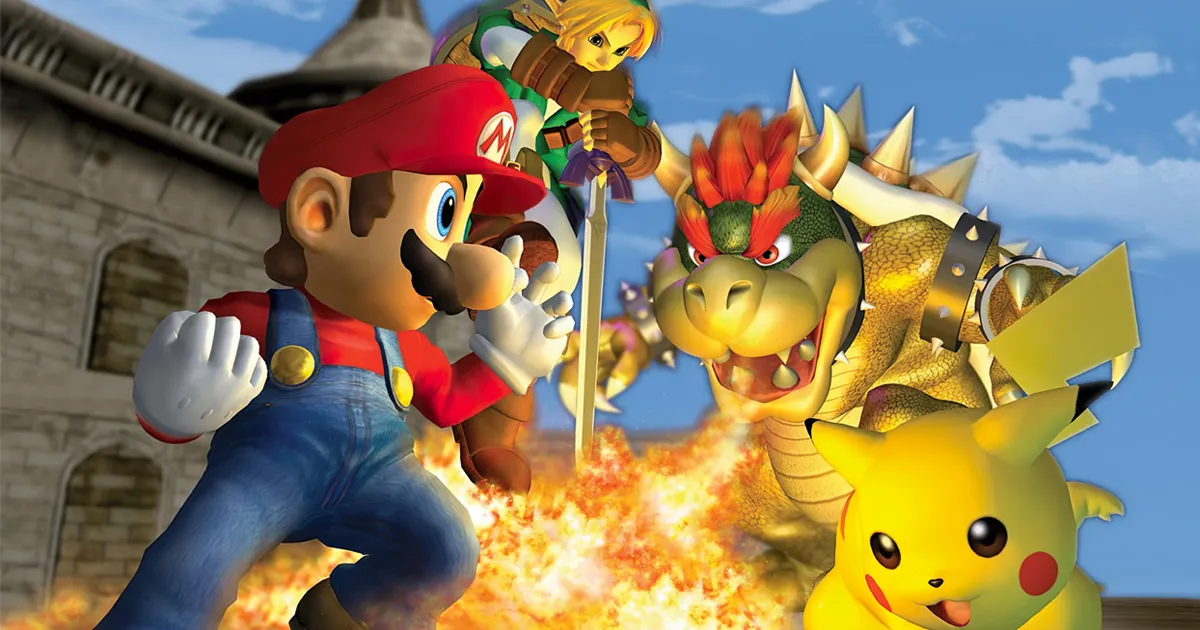Everything We Know About Super Smash Bros. Melee's Development
Super Smash Bros. Melee Development Documentary
To start things off, I present to you my first documentary about Melee’s dev, Elevated: The Development Story of Super Smash Bros. Melee. This is a 2021 video I uploaded that covered most of the story.
Here is Sakurai’s video covering Melee:
Super Smash Bros. Melee Development Timeline
Based on the incredibly helpful Melee development timeline from SourceGaming, below is a chronological list of when we know things happened by date.
May 1999:
- Masahiro Sakurai reveals Melee’s existence.
- Sakurai creates a poll on the Smash Bros. DOJO!! website asking fans what they want in a theoretical Smash 2 game.
- Top 5 requested characters: Bowser, Peach, Wario, Dedede, and Ganondorf.
July 5, 1999:
- Sakurai completes the project proposal and initial design documents for Melee. However, the final game would differ greatly from its original proposal documents.
- Includes concept to modify controller to include a jog dial.
In the proposal for Super Smash Bros. Melee, Sakurai proposed a "jog dial" for the GameCube controller.
— David V. Kimball (@davidvkimball) December 1, 2023
He felt it would offer players a quicker way to scroll through menu options (like a scroll wheel on a mouse) as well as offer a new tactile way to interact with games. pic.twitter.com/nflsu2Lzs3
August 2000:
- The modeling and rigging for the Meowth trophy was completed, used for Spaceworld’s “Meowth’s Party” technical demo.
Early Fall 2000:
- Development of Melee begins.
- Only had access to GameCube emulator without full power of the actual dev kit.
September 2000:
- Super Smash Bros. Melee development team gets actual Dolphin development kits.
January 2001:
- Sakurai begins work on storyboards for the opening cinematic, forgoing his planned New Year’s vacation
- Ganondorf was not yet confirmed at this point, but Mewtwo was in development1
Happy 21st birthday, Super Smash Bros. Melee!
— David V. Kimball (@davidvkimball) November 21, 2022
To celebrate, @Sora_Sakurai released never-before-seen concept art from #SSBM's opening movie, check it out!
Kudoz to the animation company that followed Sakurai's specific instructions, it came out perfectly! pic.twitter.com/NiMnTz6yVH
February 14, 2001:
- The team decides to move forward with an orchestral soundtrack for the game, headed up by Shogo Sakai, taking over for Hirokazu Ando.
April 2001:
- Recording of over 4,000 original sound effects begins.
- Sysdolphin 1.0 finished development.
May 17, 2001:
- Melee is revealed at E3 2001, featuring the opening cinematic.
- A playable demo is available on the show floor.
- Melee development team has grown to over 50 people.
- Yuji Naka (Sonic Team CEO) and Hideo Kojima approach Sakurai about including their characters, but it’s too late in development.
August 24, 2001:
- An early build of Melee is used in its first ever tournament called Premium Fight at Spaceworld 2001.
October 31, 2001:
- The Japanese and North America NTSC build is completed, just in time for production (version 1.00).
- The Japanese demo was finished shortly thereafter on November 3rd, 2001.
November 21, 2001:
- Super Smash Bros. Melee is released in Japan.
- Just a day later on November 22, NTSC-U and NTSC-J version 1.01 would be completed.
December 3, 2001:
- Melee is released in the United States (still v1.00).
- Development of the US demo has completed on the same day.
December 22-23, 2001:
- Jump Festa 2002 hosts the first Melee tournament featuring the final version of the game.
February 13, 2002:
- US and Japan’s version 1.02 is completed.
March 13, 2002:
- Version 1.03, created for the PAL region, has finished development.
- March 25th is when the PAL demo has finished development.
Early 2002:
- Toys R Us’ competition, Fighting Road 2002, was held in Osaka and Tokyo Games, and Hiroshima, with the final competition taking place on March 3, 2002. Participants wrote about their experience (also here).
May 24, 2002:
- Melee is released in Europe (version 1.03).
May 31, 2002:
- Melee is released in Australia.
August 27, 2002:
- The New Japan Philharmonic performs an arrangement of Melee’s music in Tokyo.
2002年2月のファイナルファンタジー、そして8月の大乱闘スマッシュブラザーズDX …。私のゲーム音楽コンサートが始まりました。あれから16年。スーパーマリオ、ゼルダと続く今年も、初心を忘れず、楽しく、精一杯頑張ります! pic.twitter.com/lD4I0CghiM
— 竹本泰蔵 (@takemoto_taizo) August 26, 2018
Sakurai’s video about the Smash Bros. DOJO!! websites:
Development Trivia
- Melee uses “Ready… Go!” instead of “3, 2, 1… Go!” because of the “lengthy” loading times compared to Smash 64.2
- Melee removed skeleton models from Smash 64 because the team ran out of time and they weren’t sure it was possible to read and retain bone models from a disc rather than the cartridges used for the previous game.3
- Sakurai has desired a reply function at least since Melee.4
- Originally, Corneria and Venom’s stage music were swapped.5
- The full title of Marth’s debut game was omitted because of the game’s in-game character count limit for game titles listed on trophies.6
- A name tag showing up during Shiek’s recovery was a feature they didn’t have time to remove.7
- Sakurai acknowledged that Pichu technically can’t learn Skull Bash or Agility in the Pokemon games, but had to use those moves anyway as Pikachu’s clone character.8
- Glancing blows (phantom hits) were an intentionally added feature in Melee. 9
- The tracks in Melee’s OST that use an orchestra include:10
- Melee’s Opening
- Great Bay
- Fountain of Dreams
- Corneria
- Venom
- Pokemon Stadium
- Every character’s victory fanfare
- (Mute City uses live electric guitar)
- Sprout Tower was the original backstage for the Pokemon franchise which became PokeFloats.11
- Melee stages were made deliberately smaller compared to 64’s to help with character visibility.12
- Continued from Smash 64, Sakurai used the Japanese Mario Kart voice actor for Luigi as a reference, which is why his voice is higher-pitched than Mario’s.13
- Kingdom of Akaneia was a canceled Fire Emblem stage, which would feature trebuchets, dragons, and mages.14 This is likely what the empty stage AKANEIA on the disc is.
- Smooth landing (L-canceling) was modified from Smash 64 from cutting the landing lag to 0 to cutting the landing lag in half.15
- Exchanging battle data and exchanging trophies was planned for Melee, but cut due to risks of accidents occurring on the new GameCube hardware.16
- Grabs and throws were made deliberately weaker in Melee compared to Smash 64.17
- Assist Capsules, the precursors of Assist Trophies, were considered at one point as items, but were scrapped.18
- Fox and Falco’s unique dialogue for specific winning conditions was a cut feature, but the audio lines were left on the disc accidentally.19
- Navi would have appeared in Link’s taunt, but the team ran out of time.20
- Stamina Mode originally had players start with 170HP instead of 150HP.21
- Roy was added specifically to promote the upcoming Fire Emblem game, The Binding Blade on GBA.22
- Zelda with a Sheik transform was decided from the very beginning of development.3
- Sakurai wanted to include the Dark World theme from Zelda: A Link to the Past as a music track but was unable to for an unspecified reason.23
- Showing hitboxes in Training Mode was considered, but ultimately cut because it would have “taken away too much of the fun.”24
- Venusaur and other Pokemon originally were to appear on the Pokemon Stadium stage (like in Saffron City in Smash 64) and use moves. But due to the complications around getting the models and animations to appear with the programming constraints, the feature was removed. He did, however, retain as much of this progress as possible into the Pokeball item. Whether or not canonically Pokemon could use the moves they were using in the game was not as much of a priority although some research was done. The main priority was not overlapping with other Pokemons’ abilities.[^^cc]
- Summit was a stage considered as the back Ice Climber location. It was planned but was eventually canceled (likely ICETOP on-disc).25
- Sakurai considered unique model swaps as costumes for characters more challenging than mere color palette swaps due to character creators valuing their creations’ individuality.26
- Had the dev team had more development time, Sakurai would have prioritized resting and recovering from his overwork rather than developing new content.27
- Fire Emblem trophies were planned for Melee, but because of the complexities of the models that would be required to create, they ended up scrapping them.28
- Sakurai wanted to keep Samus’ gender a mystery in Smash 64 akin to how it was a special reveal in the first Metroid game, so he intentionally chose to not give her voice sounds in Melee as well.29
- Board the Platforms was initially planned for Melee, but was cut.30
- Sakurai included Mach Rider music in Melee because he liked it.31
- Mewtwo’s Confusion used to have less lag, but was changed when you could use it for a nearly infinite combo.32
- Giga Bowser and Bowser are separate characters. Bowser and Giga Bowser’s portrayal were both inspired by Sakurai’s perception of the “beastlier” Bowser with which he was familiar from the NES era games, despite Nintendo’s direction to take the character in a “cutsier” direction.33
- DK being hit by that ball of energy in the opening movie is in fact Mewtwo’s shadow ball.34
- Deciding to include Mewtwo had to do with considering what an interesting moveset that would include using supernatural powers and also the voice actor of a leading character in a worldwide movie may have mass appeal.35
- Sakurai acknowledges the utility of a wavedash, calling using the technique a kind of backdash, when a fan explains how he discovered it with Luigi. However, he questioned how useful it was.36
- Sakurai himself came up with the voice lines for the characters, including Mewtwo’s victory lines.37
- Ditto was originally a Pokemon in the Pokeball item and a reference to it was accidentally left in the player’s guide. Remnants of Ditto remain on the disc where you can see him appear through hacking and hear his Japanese cry when it appears.38
- Music tracks for Temple and Onett went through several revisions, you can hear early versions of it in various uploaded media.
Flat Zone has several unused animations for the Game & Watch games Fire and Parachute that still exist in the games files.
Corneria has some unused animations as well, with some of the buildings collapsing (thanks, nyancat128!).
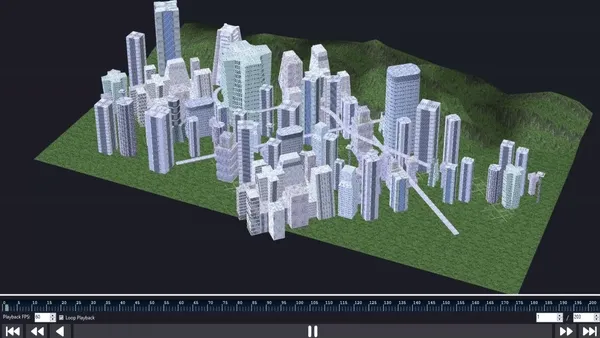
Considered Characters
- Other retro reps: Balloon Fighter, Urban Champion, Bubbles, Excitebike Racer.39
- Takamaru from the Mysterious Murasame Castle was considered for a Smash 64 sequel game, but didn’t consider it likely.40
- Ayumi Tachibana from Famicom Detective Club was considered, but ultimately only included as a trophy since an overseas audience wouldn’t be familiar with her.41
- Lucas from Earthbound 6442
- Wario, if just one more character could have been added to Melee. But instead, Sakurai opted to include Marth, Roy, and Mewtwo instead.43
- Sukapon wasn’t able to appear as an in-game item where characters could ride him due to complicated circumstances (and that appearing in later installments would be unlikely). But he was planned and had progress made at one point.44
- Mach Rider came up when a fan asked Sakurai about who he’d include in a Smash 64 sequel. His reason was simply he liked the character’s name. He mentioned people from his generation would want more characters from Mach Rider and The Mysterious Murasame Castle.45
Requested Characters
- Hideo Kojima begged Sakurai to include Solid Snake in Melee, but the game was too far along in development for the inclusion to be feasible.46
- Sonic the Hedgehog was a request from Yuji Naka to Sakurai at Space World, where Sakurai responded and said “I wish you’d have said something sooner!”47
Acknowledged Characters
- Banjo and Kazooie, which Sakurai mentioned would be a character pair thought to be an obvious inclusion in the game, were sadly absent due to complicated matters.48
- Sakurai confirmed there were never plans to add Saki from Sin and Punishment.49
- Sakurai states characters from Animal Crossing are clearly not suitable for Smash.50
- James Bond was “blocked on all sides” due to representation of real guns, actor’s portrayal and likeness, original work is a movie, not a game, and the associated game is by Rare.51
- Meta Knight, mentioning both Marth and Roy already have swords, and Meta Knight is also surprisingly versatile - so those would be considerations if decided.52
- King Dedede can’t be added as a mere model swap of Kirby.53
- Regarding both Meta Knight and Dedede, he noticed they were fairly high up on the popularity polls, and would keep it in mind for the future.54
- Slippy and Peppy were acknowledged as interesting picks, since “it would feel more satisfying to have the whole team together, wouldn’t it?”55 They, along with Falco, were also once considered as alternative costume options for Fox in Smash 64.
The Continued Story of Super Smash Bros. Melee’s Development
A follow up to my first documentary, I go a bit deeper into the archives of HAL Labs, E3 2001 footage, and interview former Nintendo World Report staff member Jonathan Metts as he recounts his experience at E3 2001. I also review some of the newer videos Sakurai’s uploaded that has shed some light on Melee’s development in the years since my first documentary.
Specifics from early E3 footage
- All shields were red.
- You could grab the ledge of the laser cannon on the Great Fox on the Corneria stage.
- You could jump again after an air dodge.
- Link’s sword had no swing trails.
- Hitstun and the timing for Falcon punch were identical to Smash 64.
- Various character animations were less exaggerated and simpler.
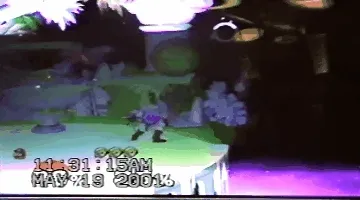
Post-Release
- Sakurai continues to answer fan questions on the Melee News Flash site until February 8, 2002.
- The game sells over 7 million units in its lifetime, becoming the best-selling GameCube game.
- Tournaments and events continue to be held, promoting the game and its competitive scene.
- Players discover advanced techniques like wavedashing, which were unintended consequences of the game’s physics engine.
- Sakurai expresses some regret about the game’s high skill ceiling, feeling it may have affected accessibility.
- Brawl used Melee screenshots for his Final Smash concept in the Brawl proposal document.
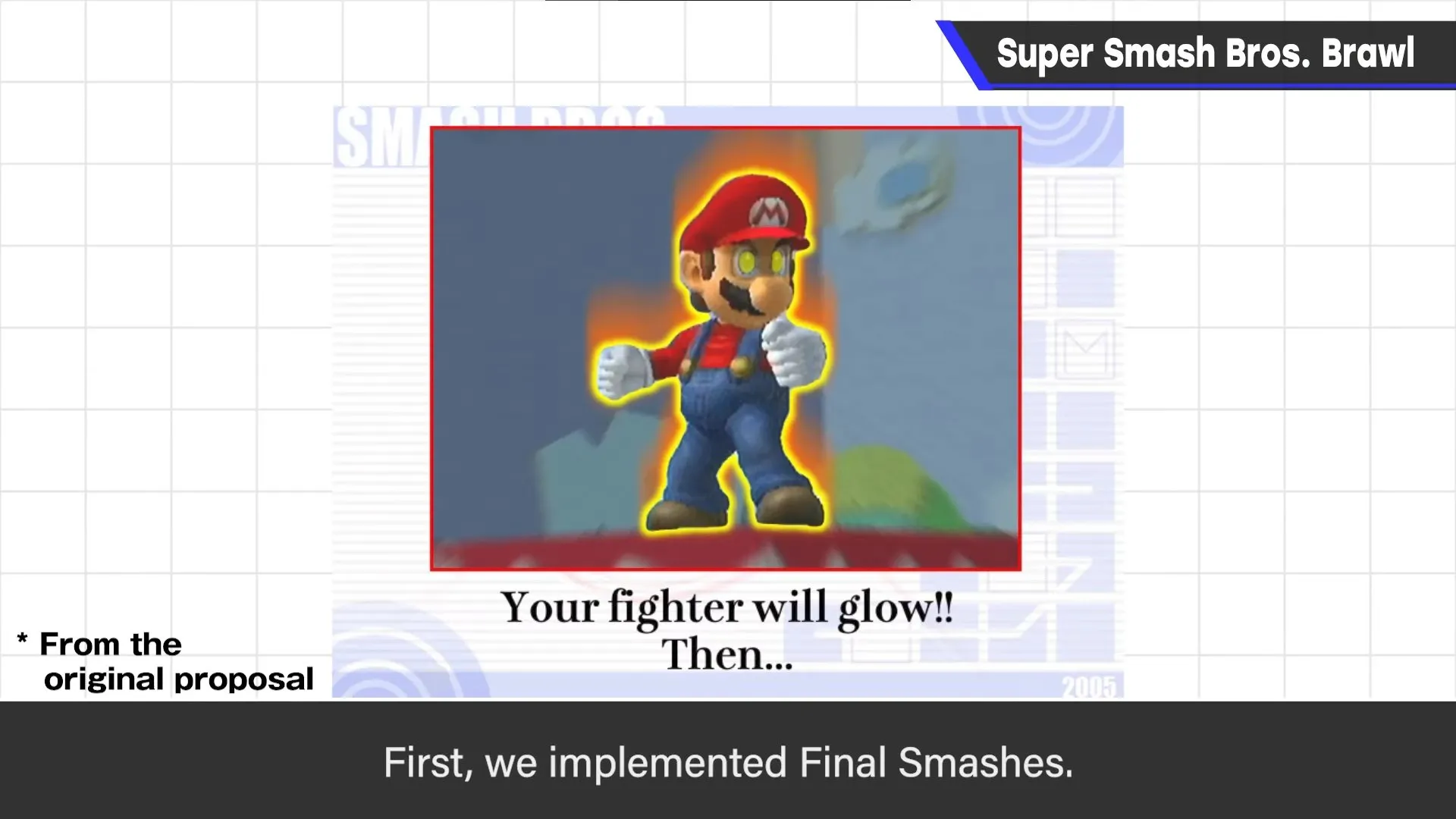
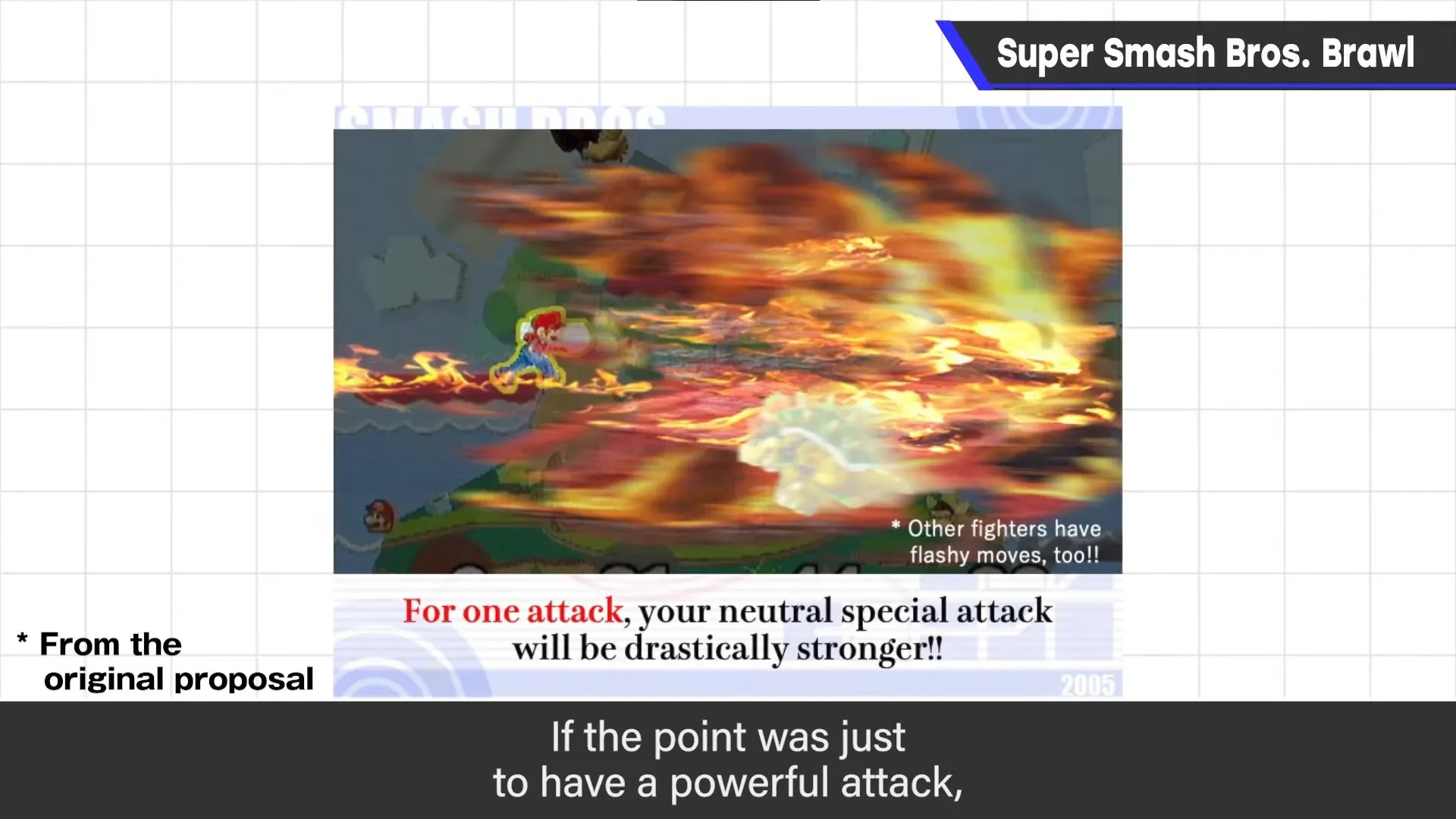
- Leslie Swan voice lines for Peach used early on instead of Jen Taylor.
Just met the lovely @jentaylortown.
— David V. Kimball (@davidvkimball) March 31, 2024
She mentioned when voicing Peach in Smash Melee (and her other early Peach roles) she was told to imitate Leslie Swan's performance as closely as possible.
They're each pretty distinct to me - it's very cool we're able to hear a bit of both. pic.twitter.com/pZVHmFDvES
- Ocarina of Time Link can be seen in an earlier version of Brawl.
I'd kill to get my hands on an early version of Brawl with "Melee's Coloring." pic.twitter.com/OH5HRppN4z
— David V. Kimball (@davidvkimball) December 4, 2021
My Very First Games of Super Smash Bros. Melee
On June 19th, 2002, my brother and I got to play our first Melee matches on the retail version of Melee, version 1.0, on our cousin’s GameCube.
Captured in all its VHS glory, you can watch below.
Additional Details
- Sakurai clarifies when he says “adult circumstances” he just really means complicated circumstances.
- Sakurai states that fans can’t really realistically conceptualize how many more characters could have been added to Melee had they removed other unrelated features. It’s not a 1:1 situation. Changing properties of clone fighters is significantly easier than creating new animations, making significant model changes, or programming new abilities. A removal of a clone character, therefore, wouldn’t necessarily mean it would be possible for a completely unique character inclusion. For example, Sakurai said he couldn’t just add King Dedede as a model replacement for Kirby.
- The development team had a spec sheet they’d use to consider characters, and as they scrapped each one, they’d mark the character’s face with an “X”.
- Satoru Iwata stepped in to help with debugging in the final weeks of development.
- The game’s opening cinematic was created by multiple animation studios and required extensive coordination.
- Unused content includes alternative voice clips, scrapped items, and planned features that didn’t make the final cut.
- The game’s success led to numerous promotional events and tournaments in Japan and internationally.
Next time, when someone says "L-canceling, wavedashing, phantom hits, etc. were unintended in Melee" show them this from the Smash Bros. Fist website from 2001/2002.
— David V. Kimball (@davidvkimball) March 5, 2022
Not everything was intentional, though. Like a player's tag still showing during Sheik's vanish was a mistake. pic.twitter.com/YFyw7KLozX
Full Jonny Metts Interview About E3 2001
Here’s my full interview with Jonathan Metts, formerly of Nintendo World Report back when it was Planet GameCube and his experience going to E3 2001.
Further Reading and Watching
- HAL Diaries Blog
- Smash 2 Poll
- Early Smash History - Melee Stats
- Melee Development Interview
- Unused Content - Melee on The Cutting Room Floor Wiki
- Unused Content in Melee - SmashWiki
- Game Design: Risk and Return (GDC 2004)
- Sakurai responds to a fan desiring commercial “Smash Bros. figures” - interesting that Amiibo would eventually be an option.
- ChainSwordCS Alt Melee Documentation
- Melee Beta YouTube Playlist
- Space World 2000 game footage
- Clean B-roll game footage
- Nintendo Booth Footage
- E3 2001 Sizzle Reel
- Space World 2001 Raw Tapes B-Roll
- GameWave (ゲームウェーブ)
- Nintendo World Report
- Jonny Metts’ E3 2001 Audio Diary
- Chief Neif’s post replies on X about hidden food in Melee stages
- A list of every known Super Smash Bros. Melee ISO
- Dean Harrington, Melee announcer interview on Source Gaming
Footnotes
Smash Bros. DOJO!! Melee website, Smash Bros. DOJO!! Melee website ↩
Smash Bros. DOJO!! Melee website, Smash Bros. DOJO!! Melee website ↩
Smash Bros. DOJO! Melee website, Smash Bros. DOJO!! Melee website ↩
Smash Bros. DOJO!! Melee website, Smash Bros. DOJO!! Melee website, The Great Sukapon Search in Melee by Source Gaming ↩
Smash Bros. DOJO!! 64 website, Smash Bros. DOJO!! 64 website ↩
Schmuplations’ Famitsu Dec 2001 Translation, Smash Bros. DOJO!! Melee website ↩

